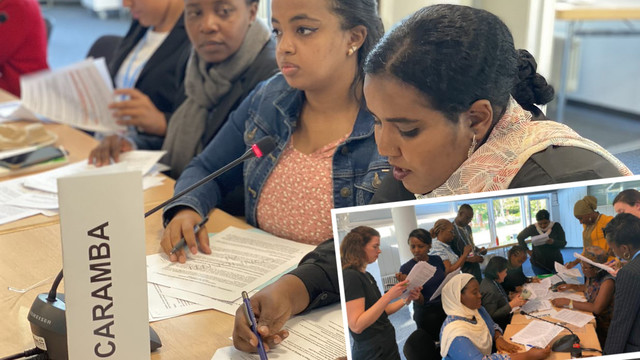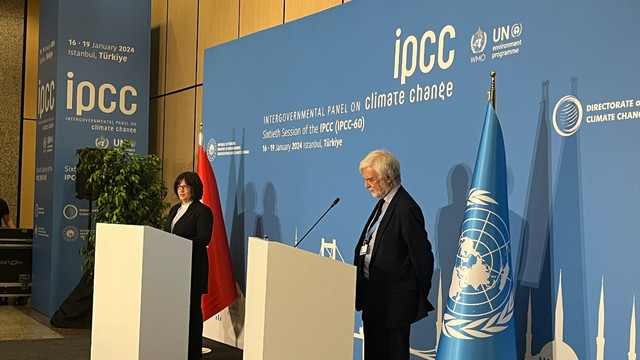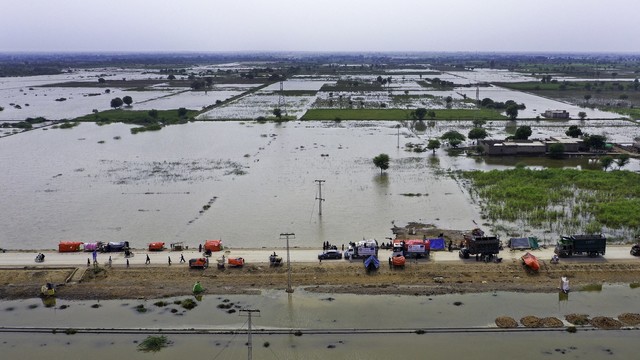Developing a vision for The Gambia’s future
The Paris Agreement invites all countries to submit mid-century low-carbon, climate-resilient development strategies by 2020. Gabrielle Swaby chronicles The Gambia’s progress towards fulfilling this commitment.


The Gambia is experiencing increasingly irregular rainfall patterns, resulting in saltwater from the Atlantic Ocean seeping into freshwater river systems (Photo: Dan Roizer, via Unsplash, public domain)
Home to just over two million people, The Gambia is one of Africa’s smallest states. But it is making big waves in climate circles, not least because its Nationally Determined Contribution (NDC) is one of the world’s most ambitious.
It is no surprise, then, that it is also on track to deliver another important Paris Agreement commitment: its long-term low greenhouse gas development strategy.
Long-term strategies
Also known as long-term strategies (LTS), these plans for achieving low-carbon, climate-resilient development by 2050 are intended to complement and guide short-term climate action. Fifteen countries have already submitted their LTS and many others are expected to follow this year. The Gambia plans to be one of them.
The Paris Agreement is flexible on what LTS should look like, so countries must determine what suits them best in terms of both content and process. In The Gambia, half the population lives under the poverty line with no access to electricity. The proportion of global greenhouse gases it emits is therefore negligible, so its LTS will be very different from those of industrialised, wealthier countries.
A vision for the future
Some of The Gambia’s greatest challenges are climate impacts, risk and vulnerability. So, as well as focusing on reducing emissions, its long-term climate response must inform and plan for effective adaptation and enhanced resilience.
The country has started developing an LTS vision that will set out its long-term direction and goals. This vision could show the rest of the world that it is feasible – and beneficial – to operate differently, spearheading a more purposeful, climate-centric development dynamic towards poverty eradication. It could also help provide credibility and certainty that the Paris Agreement goals can be achieved, increasing transparency and trust among nations.
This vision will guide The Gambia’s development of its full LTS, by guiding the type of modelling and economic analysis it needs (if any) to clarify uncertainties around different scenarios and the type of regulatory or policy landscape it should put in place.
A robust process under way
Although countries have great flexibility in their LTS design, The Gambia is working hard to follow some guiding principles to ensure the process is credible, principled and robust.
A coordinated, whole-of-government process: The Ministry of Environment, Climate Change and Natural Resources (MECCNAR) will lead The Gambia’s LTS visioning process, working closely with the Ministry of Finance and Economic Affairs (MOFEA). This partnership indicates a clear understanding that the vision cannot be purely climate-focused and will benefit from a range of experience and connections across government departments.
Buy-in from high-level political figures: Highlighting the importance of tackling climate and development as one, MECCNAR and MOFEA ministers jointly opened an inception meeting for the visioning process in January 2020. They underlined how the country should use its LTS to align policies and processes that are already in train and provide certainty for climate action in the real economy. The high-profile ministerial input gave the meeting a welcome political nudge.
The in-country team is working with the permanent secretaries of both ministries to write and submit a joint paper that will alert all government members to the LTS and expectations around the final outcome. It will also highlight the importance of including different political parties in the process and raise awareness of the benefits of developing the LTS across the whole of government.
Aligning policies and processes: ‘Vision 2020’ (PDF), published in 1996 to guide The Gambia’s development priorities, is reaching the end of its term. With a new national vision due this year, the time is ripe for aligning long-term resilience and development planning by ensuring the LTS and national visions feed into each other. The timing is also right for aligning the LTS with the country’s revised NDC, expected this year.
The LTS vision will not start from scratch. It can build on existing policies, including the National Climate Change Policy and the Strategic Programme for Climate Resilience. The Least Developed Countries Group’s 2050 Vision for a climate-resilient future (PDF) can also provide inspiration.
Next steps for The Gambia
A whole-of-society approach: IIED has been working with The Gambian government throughout this process. Together, we are focusing on creating space for a rich national dialogue on development models and the country’s future trajectory.
We will do this through stakeholder consultations to address issues around long-term planning and test ideas for an overall vision and the highest feasible level of ambition. For each consultation, we will make efforts to ensure all voices and priorities are represented and that they shape the modes of delivery outlined in the LTS.

IIED's Gabrielle Swaby presents at an inception meeting for developing The Gambia's long-term vision for achieving a low-carbon, climate-resilient economy and society, in January 2020 (Photo: Elaine Harty, IIED)
The Gambia has ten confirmed cases of COVID-19 (including one death) at time of publishing. The government has instigated social distancing, which may impact the timing of the stakeholder consultations. The country’s attention will rightly be focused on avoiding a health emergency, and solidarity from the international community will be all the more important at this time.
Although this may affect timescales, the process thus far is encouraging, and we look forward to continuing to support The Gambia on this journey. We also hope that other countries can learn from The Gambian experience.




